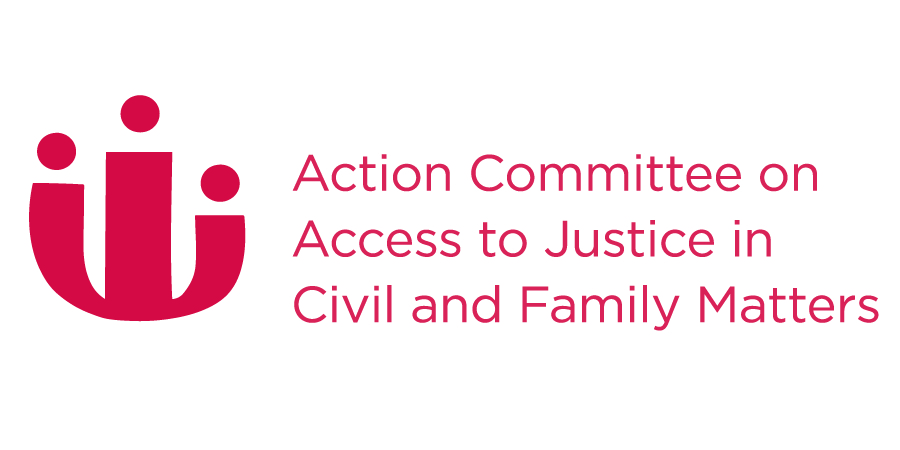Integrating Innovation from Other Jurisdictions: Thoughts From the Innovation and Access to Justice Conference
Quin Gilbert-WaltersTuesday, October 27, 2015
The A2J debate in Canada and the U.S. includes many perspectives on the challenges of accessing a range of legal services and aid, and offers any number of potential solutions. While my role as Communications and Research Assistant with the Canadian Forum on Civil Justice has, in many ways, provided me with an online platform to discuss issues surrounding A2J in Canada and the U.S., and to learn about the many challenges to legal aid service delivery, on October 1st and 2nd, the inaugural Innovation and Access to Justice Conference provided me with an entirely different platform to engage in conversations surrounding A2J issues: social labs, workshops, panel discussions and one-on-one, in-person dialogues.
Of the many burning questions I sought answers to, one in particular stood out. Before leaving for the conference, a man at the subway station asked me for directions. Normally, I respond with the best directions that I can and go on my way. This time, however, I struck up a conversation with him. I soon learned that he was traveling from Toronto to Barrie to support a friend in court. By way of justification for his travel, he added, “what are you going to do? He’s a friend.” The question at the forefront of my mind as the Innovation and Access to Justice Conference got underway stemmed from this conversation at the subway station: why is going to court so stressful that someone would require support from a friend? I wanted to know how the dispute resolution system can be changed so that Canadians engaged in disputes might be able to resolve their problems before going to court. And, in circumstances where court is necessary, how can the process be made less stressful and more informative?
The Innovation and Access to Justice Conference provided an opportunity for lawyers, researchers and A2J stakeholders from all over the country to share information about initiatives aimed at resolving access to justice issues. The conference was also a forum for discussion, and a source of inspiration stemming from A2J practices being used by other jurisdictions, provinces and countries. The message was clear: organizations are designing creative and user-focused ways of implementing new ideas in the Canadian legal landscape. Over the span of two days in Montreal, I learned first-hand how Canadian organizations are incorporating innovation in their respective provinces and into the justice system.
Two organizations in particular, MyLawBC and the Legal Information Society of Nova Scotia (LISNS), have looked to inspiration outside of Canada and successfully integrated it into their respective provinces.
Recently, MyLawBC, a website funded by the BC Legal Services Society and designed to help individuals work through their legal issues, partnered with the Hague Institute for the Internationalization of Law (HiiL) to create their own version of the Dutch Rechtwijzer (“Signposts to Justice”). The purpose of the website is to create a guided pathway for users— a roadmap for diagnosing a legal problem and determining an appropriate solution by answering a series of questions.
The website, to be released early next year, is designed the same way as Rechtwijzer – users can create their own separation agreements and communicate with other parties through an online chat function while they do so. Rechtwijzer currently offers mediation and adjudication for a fee if users get stuck on an issue. MyLawBC won’t offer mediation and adjudication services at the outset but it could be implemented later on if the website is successful.
The first round of user testing for this new initiative took place in February of this year followed by a second round of testing this past summer. Although MyLawBC has learned from Rechtwijzer that a guided pathways website for family law disputes does work, the user testing was completed to ensure that the website would function in the same way in British Columbia. Taking that into consideration, it remains to be seen how British Columbians will react to MyLawBC’s new website. People have different preferences with regards to how they receive and access legal information. This initiative by MyLawBC provides a viable alternative in the online world. By centralizing the information and resolution process, MyLawBC has created a stress-free system for users. If parties are able to determine their own legal solutions, then there will be little need for them, let alone their support persons, to resolve the issue in the courts. For the man traveling to Barrie, this could mean that he might not have to make the trek to support his friend in court at all.
Similarly, the LISNS has looked abroad for innovative strategies that can be adopted to help to increase its influence in Nova Scotia. They have drawn inspiration from English legal practice, McKenzie Friends, as well as the Court Navigator Program in New York State courthouses.
LISNS has taken a different approach to improving the dispute resolution process. Unlike MyLawBC, the programs being implemented in Nova Scotia assist people who will be going to court. In this way, the LISNS addresses the difficulty with which people resolve their legal problems through the legal system. For LISNS, it has not gone unnoticed that there is an increasing number of people representing themselves in court, for whom a support person can provide emotional support, if not, some minimal legal support.
Courts are often inaccessible both physically and due to a number of barriers, ranging from language to cost. MyLawBC and the LISNS have seen some success at adopting and adapting innovative foreign practices into the Canadian justice system landscape, which have provided important benefits for Canadians. These successes offer proof that there are ways that the dispute resolution system can be changed to become less stressful, more informative, and also offer alternatives to going to court.



